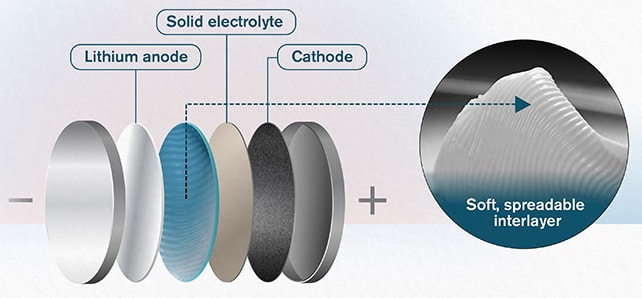
Solid state batteries are of great interest to the electric vehicle industry. New technology developed by scientists at Chalmers University of Technology, Sweden and Xi'an Jiaotong University, China, promises to improve their current density tenfold while also increasing performance and safety. And their technique is one that can be applied at production scale.
The scientists developed an interlayer made of a spreadable, butter-like material, which makes the battery cell significantly more stable, and therefore able to withstand much higher current density. What is also important is that it is very easy to apply the soft mass onto the lithium metal anode in the battery – like spreading butter on a sandwich.
Unlike today's lithium-ion batteries, solid-state batteries have a solid electrolyte and therefore contain no environmentally harmful or flammable liquids. A solid-state battery can be likened to a dry sandwich. A layer of the metal lithium acts as a slice of bread, and a ceramic substance is laid on top like a filling. This hard substance is the solid electrolyte of the battery, which transports lithium ions between the electrodes of the battery. But the ‘sandwich’ is so dry, it is difficult to keep it together – and there are also problems caused by the compatibility between the ‘bread’ and the ‘topping’. Researchers around the world have been working to develop suitable solutions for this problem.
The material which the researchers in Gothenburg and Xi'an are now working with is a soft, spreadable, ‘butter-like’ substance, made of nanoparticles of the ceramic electrolyte LAGP mixed with an ionic liquid. The liquid encapsulates the LAGP particles and makes the interlayer soft and protective.
Although the potential of solid-state batteries is very well known, there is as yet no established way of making them sufficiently stable, especially at high current densities, when a lot of energy is extracted at fast charge or discharge.
According to the scientists, however, this is an important step on the road to being able to manufacture large-scale, cost-effective, safe, and environmentally friendly batteries that deliver high capacity and can be charged and discharged at a high rate. They predict that solid state batteries will be on the market within five years.

